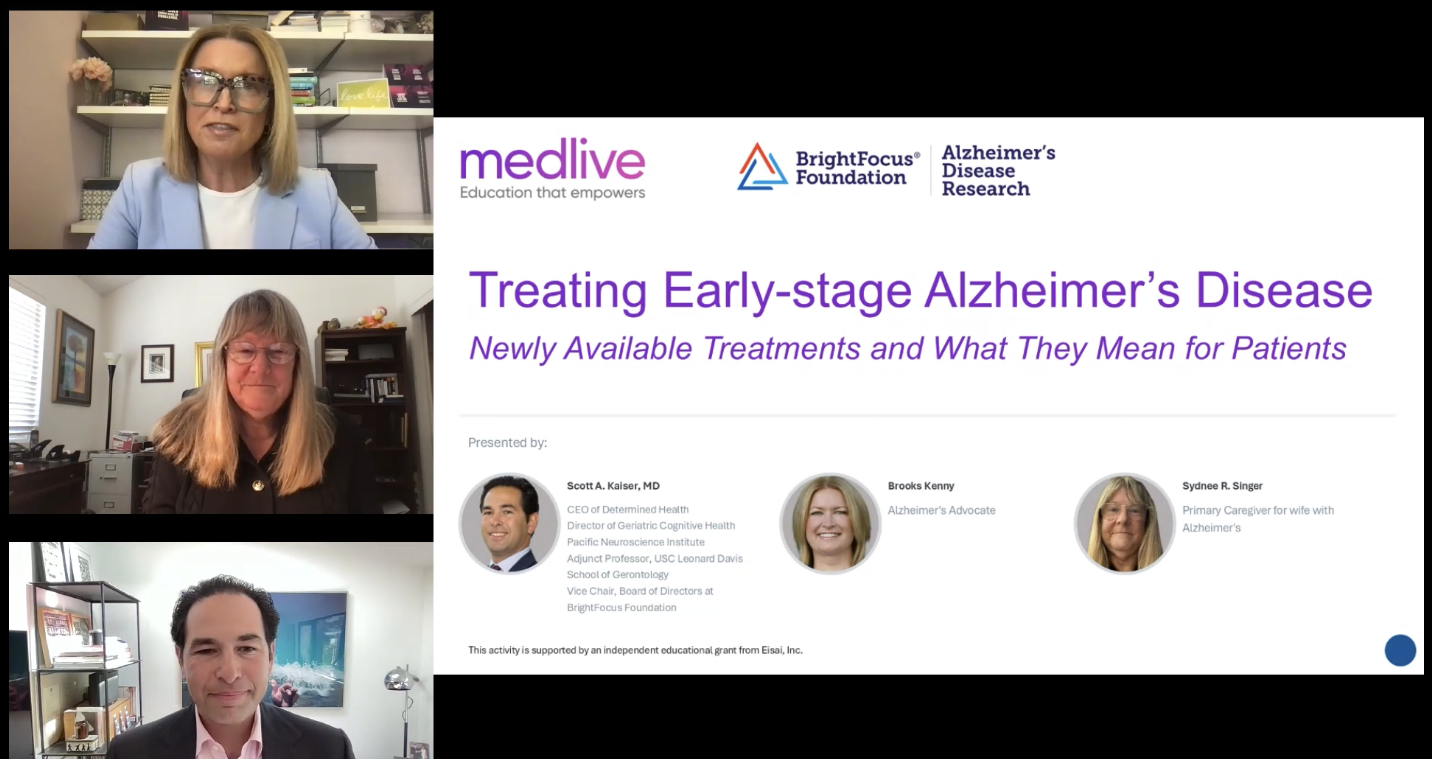
Learn about the research regarding any connection between aluminum and Alzheimer’s disease.
“Should I get rid of my aluminum pots and pans? I read that aluminum exposure can cause Alzheimer’s disease.” Marie had a new reason to be concerned about Alzheimer’s disease–her husband, a 78-year-old retired welder, had just been told by his doctor that he was showing signs of memory impairment. Marie knew he had been exposed to aluminum and other metals at work and wondered whether that had increased his risk for dementia. She was looking for every way possible to reduce his risk of getting worse, and also whether she would get Alzheimer’s because of using aluminum cookware.
*Marie and her husband are a fictitious composite of multiple patients, to illustrate the important issues without risking the privacy of any individual’s protected health information.
Like many people who come to a memory clinic, Marie wanted to know what she could do to reduce the risk of her husband’s decline — or at least to slow down what might be an inevitable disease progression.
One question that often comes up is whether exposure to various toxins, chemicals, pollutants, or even nutrients can contribute to memory loss. Researchers have been very interested in the possible risks of exposure to these substances in our food, water, and air. Certain occupations involve exposure to substances that can be dangerous, and Marie knew that her husband’s welding job had exposed him to higher levels of metals than most people experience.
Aluminum: One of the Earth’s Most Common Elements
Lead, cadmium, mercury, and arsenic are known toxic metals. But what about aluminum, which is one of the most prevalent elements on earth? Aluminum is used in construction, manufacturing, fuel additives and medications, cosmetics, and personal care products. Aluminum gets into our food from the soil in which it’s grown, and also from additives such as anticaking, antifoaming, emulsifying, firming, and leavening ingredients.
Our drinking water contains some aluminum, and the chemical purification process called flocculation (a process by which fine particulates are caused to clump together) can increase the level. Many of us prepare our meals using aluminum cookware or eat foods packaged in aluminum wraps from which a small amount of metal is leached into the food. If you use an aluminum hydroxide-based antacid, it could add several additional grams of aluminum to your daily intake. Almost all of the aluminum that we ingest leaves our bodies in feces and perspiration, but a small fraction accumulates in our internal organs, including our brains.
Aluminum, then, is a very common element, and we are exposed to it in our food and environment. And Alzheimer’s is a very common illness. But why have some researchers suggested they are related?
Why Do Some Researchers Suggest an Alzheimer’s – Aluminum Connection?
Aluminum is not considered necessary in our diets, but it is known to affect many processes in our bodies, especially when present in a high concentration. Among other things, aluminum can interfere with the expression of genes, the synthesis of chemical messengers that cells use to communicate with one another called neurotransmitters, inflammatory responses, and other processes.
In mice designed to accumulate one of the hallmarks of Alzheimer’s (the tau protein), aluminum was shown to increase the clumping and accumulation of tau and neurological dysfunction.
Additional animal research suggests aluminum might also affect amyloid production and degradation (the other hallmark of Alzheimer’s). The relevance to humans of these aluminum effects in animal models has been debated without a definitive conclusion, however.
Suspicion regarding a link between aluminum and Alzheimer’s first emerged in 1965 when scientists used an aluminum-containing chemical in their research. Injection of this chemical, aluminum phosphate, seemed to trigger cognitive changes and also neurofibrillary tangle formation in animal studies. These tangles were determined to be similar but not identical to the tangles found in the brains of people with Alzheimer’s.
Some years later, in 1973, brain tissue collected from deceased persons known to have Alzheimer’s were found to have high aluminum levels. Although this evidence was circumstantial, it led researchers to ask whether aluminum exposure might cause or even increase the progression of Alzheimer’s changes in the brain.
When large-scale studies attempted to link aluminum exposure with Alzheimer’s, results were mixed. One study concluded that exposure to more than 100 micrograms/liter of aluminum in drinking water or occupational exposure increased Alzheimer’s risk by 71 percent. Another large study, a meta-analysis (a study of studies), strongly identified late-life depression and type 2 diabetes as evidence-based risk factors for Alzheimer’s but also noted “suggestive evidence” for five additional risk factors: aluminum exposure, herpes viral infections, low-frequency electromagnetic fields, educational level, and exposure to non-steroidal anti-inflammatory drugs (NSAIDs). Aluminum’s likelihood of importance as a risk factor was less supported than other factors such as physical activity, depression, and type 2 diabetes. Another very large analysis of previous aluminum studies chosen for their high quality and credibility concluded that “there is little evidence that exposure to…aluminum…increases the risk for Alzheimer’s.”
Conclusion: Most Experts Say Not an Important Risk Factor
A persuasive editorial in 2014 reviewed the history of the “Aluminum Hypothesis,” which states aluminum exposure increases Alzheimer’s risk. The author pointed out that studies have not agreed in their results, some demonstrating concerning results but many finding no reason for concern. The author also noted that animal studies have not supported the link between aluminum exposure and typical Alzheimer’s pathology and that inconsistent results were reported in studies of works with high occupational aluminum exposure, finding both positive and negative results.
One of the most convincing of these studies, a careful investigation of miners from northern Ontario exposed to aluminum given as a protection against silicotic lung disease (a disease caused by breathing in tiny bits of silica over many years), then examined thoroughly for toxic effects, found no statistically significant neurological or cognitive differences between exposed and unexposed miners.
Despite the inconsistent findings that have led many researchers to abandon the aluminum hypothesis, a few researchers remain convinced that aluminum increases Alzheimer’s risk. It would be fair to say, however, that this does not represent current mainstream thinking about Alzheimer’s. If aluminum is a risk factor, it appears to be one of less importance than many others.
In the memory clinic, the controversy about aluminum was discussed with Marie. Although some evidence has continued to worry researchers in this area, more evidence suggests the greater importance of other factors such as management of concurrent medical illnesses, maintenance of a healthy diet, engagement in physical activity and social interaction, adequate sleep, and fostering of a brain-stimulating lifestyle.
About BrightFocus Foundation
BrightFocus Foundation is a premier global nonprofit funder of research to defeat Alzheimer’s, macular degeneration, and glaucoma. Through its flagship research programs — Alzheimer’s Disease Research, Macular Degeneration Research, and National Glaucoma Research— the Foundation has awarded nearly $300 million in groundbreaking research funding over the past 51 years and shares the latest research findings, expert information, and resources to empower the millions impacted by these devastating diseases. Learn more at brightfocus.org.
Disclaimer: The information provided here is a public service of BrightFocus Foundation and is not intended to constitute medical advice. Please consult your physician for personalized medical, dietary, and/or exercise advice. Any medications or supplements should only be taken under medical supervision. BrightFocus Foundation does not endorse any medical products or therapies.
- Lifestyle
- Risk Factors










